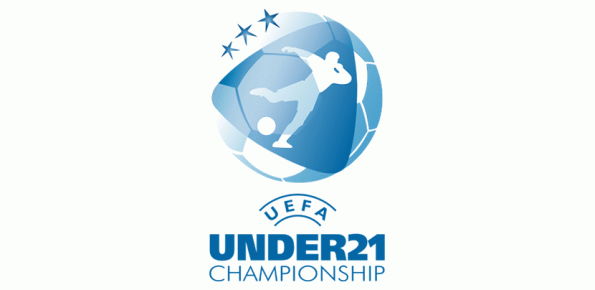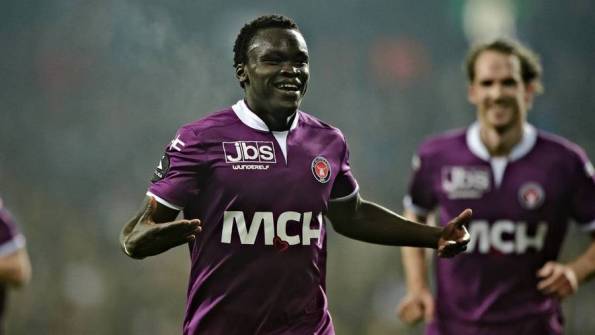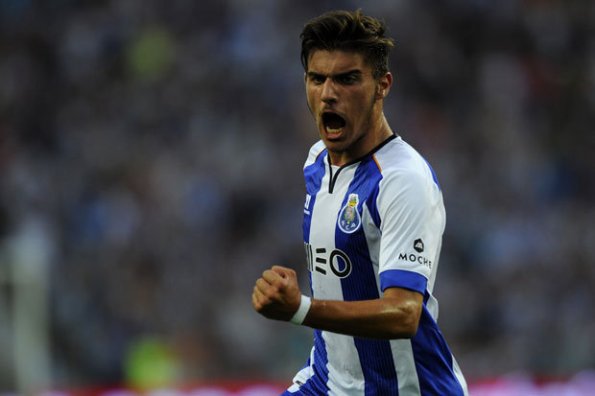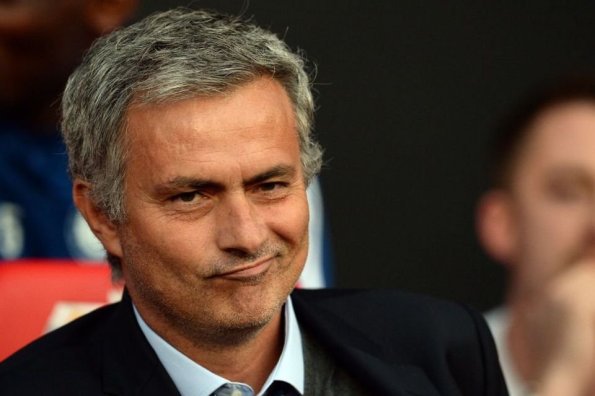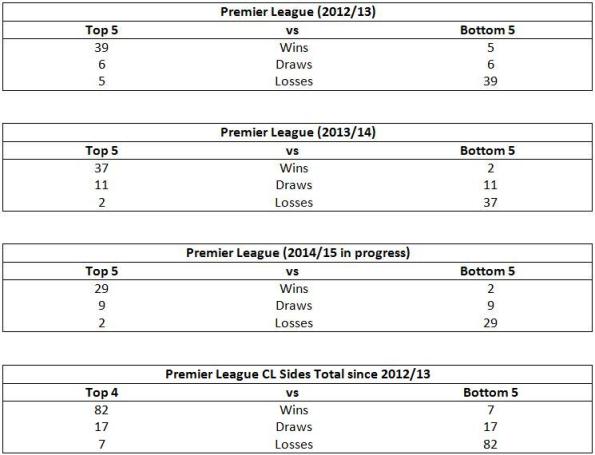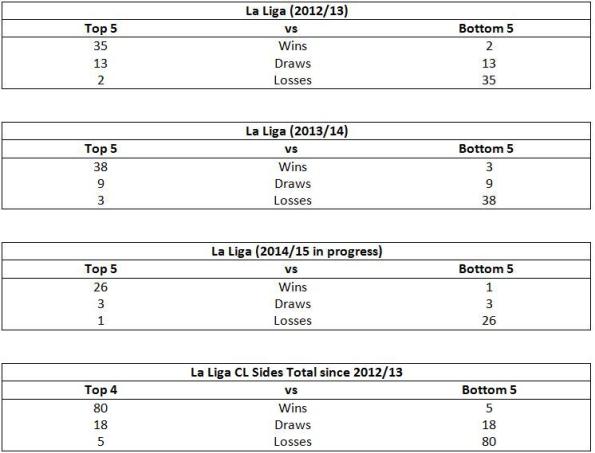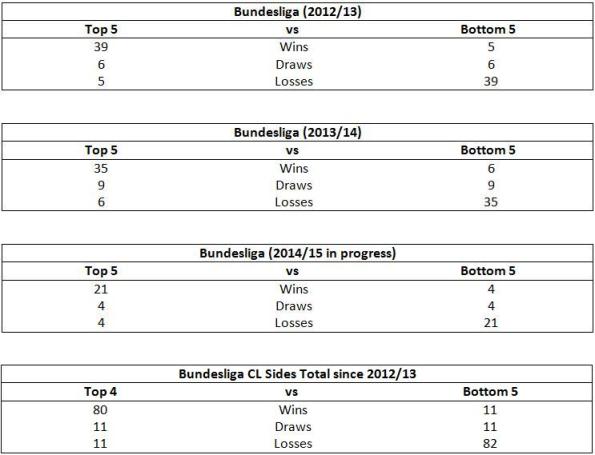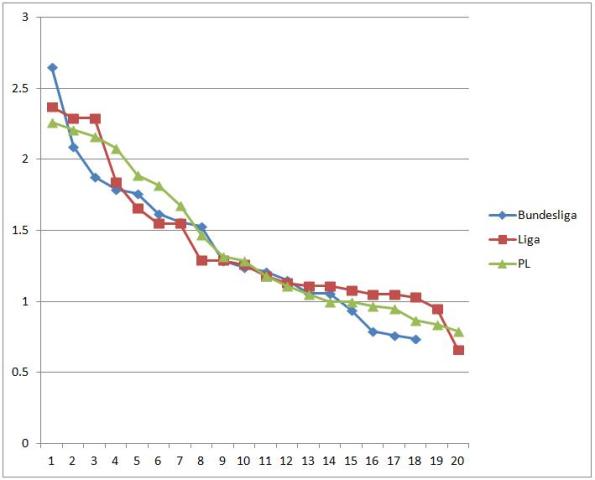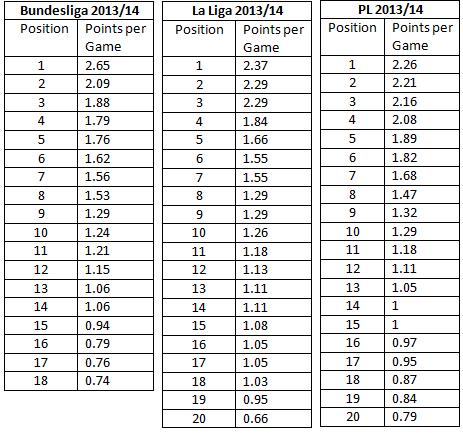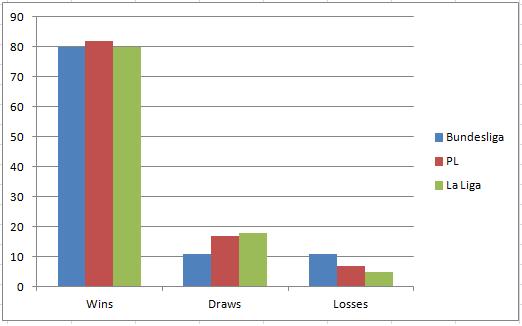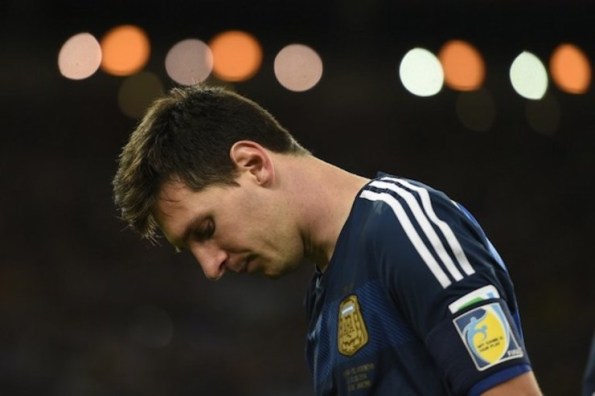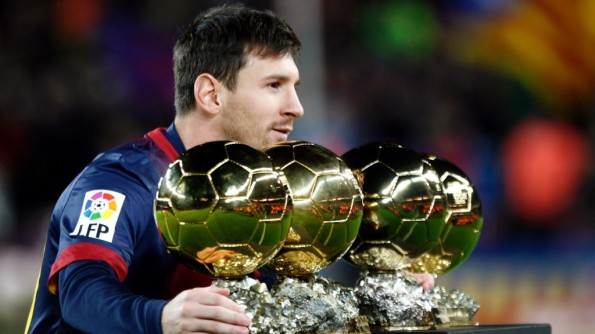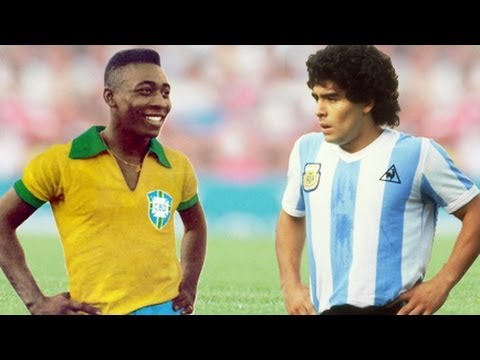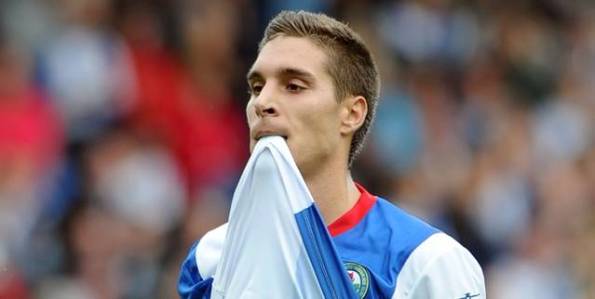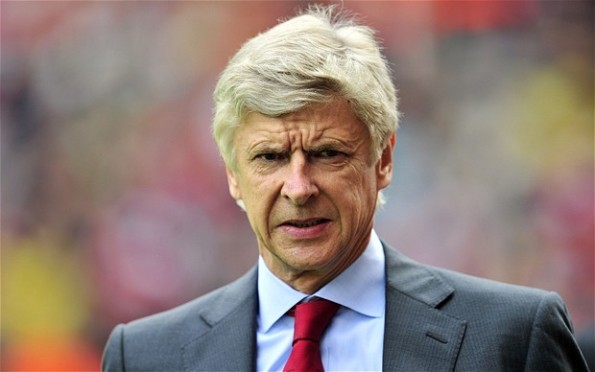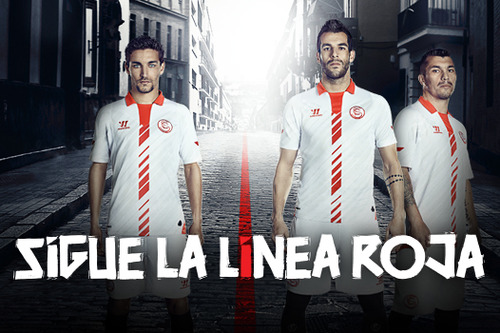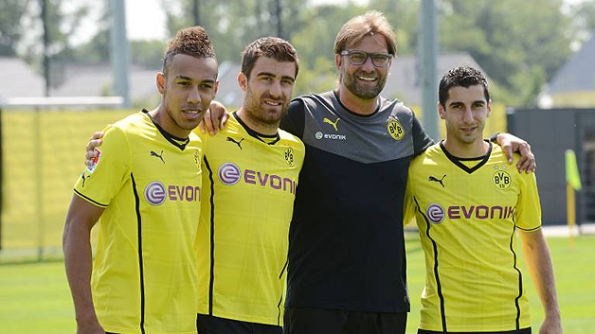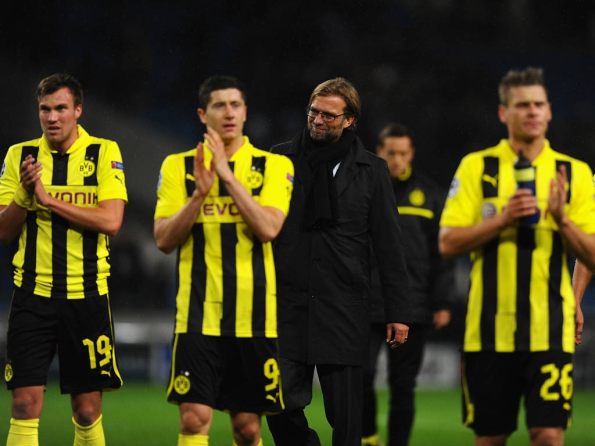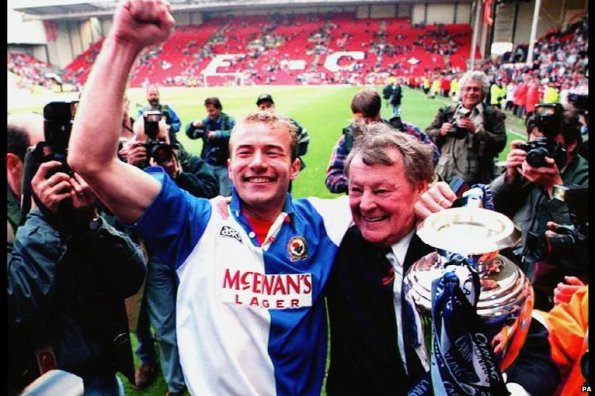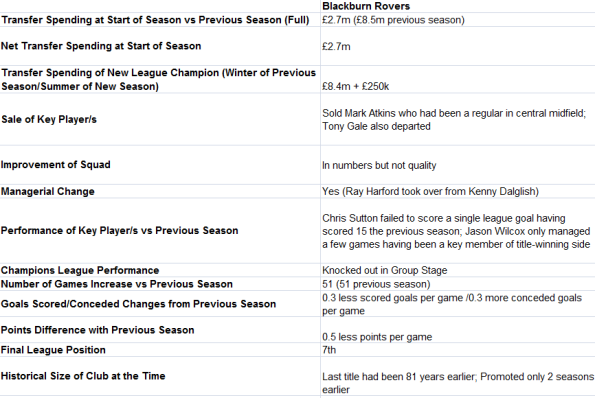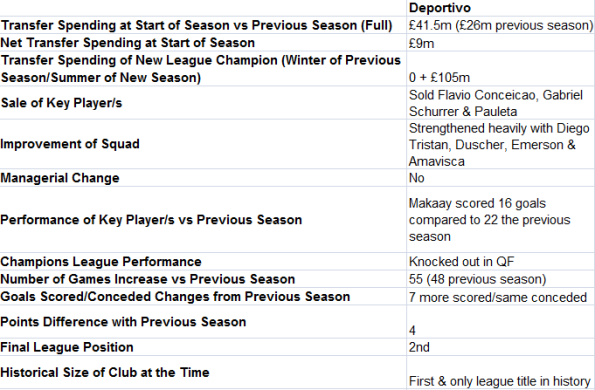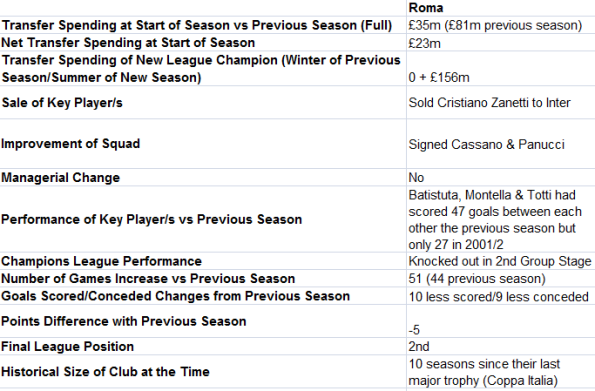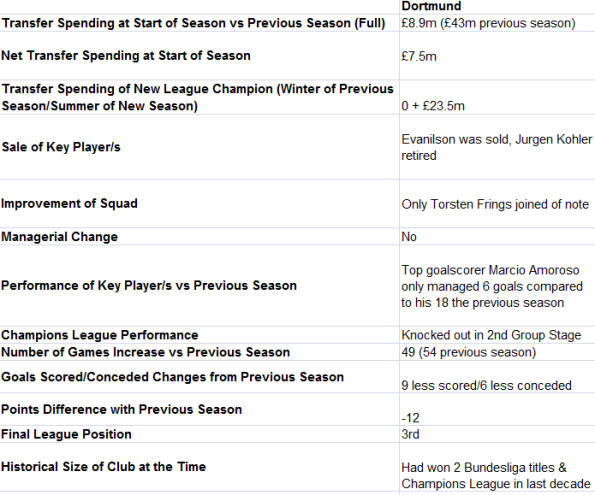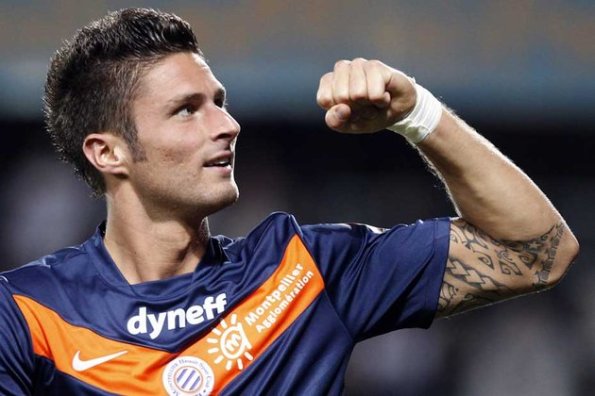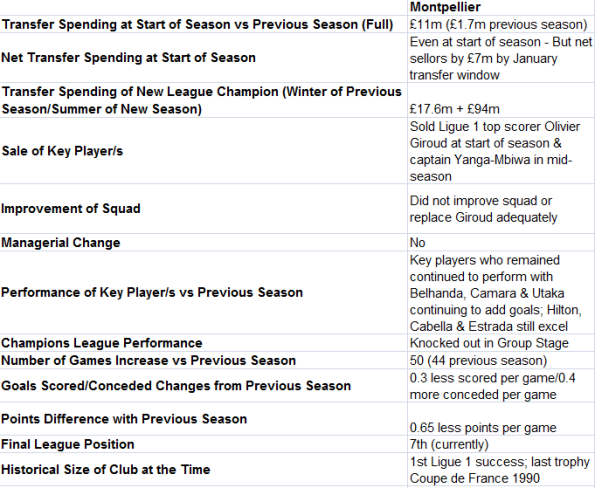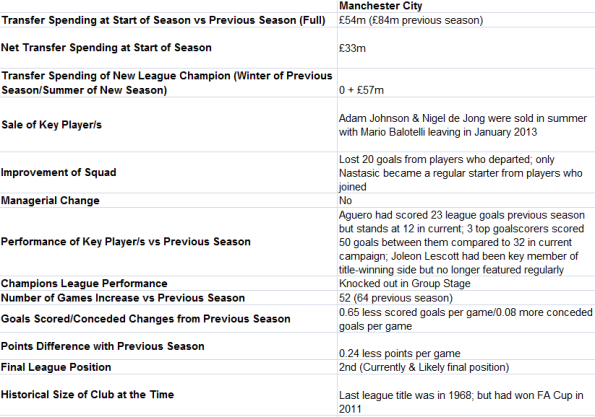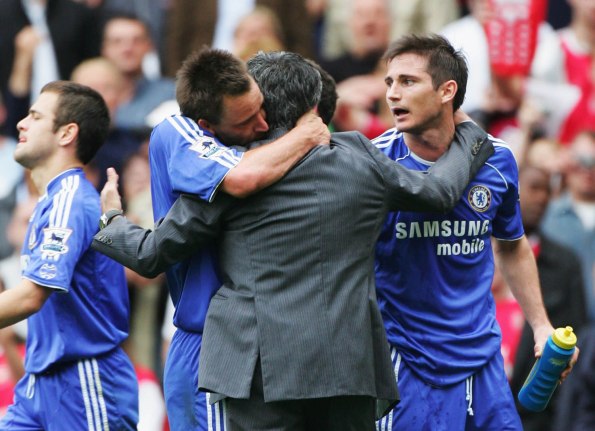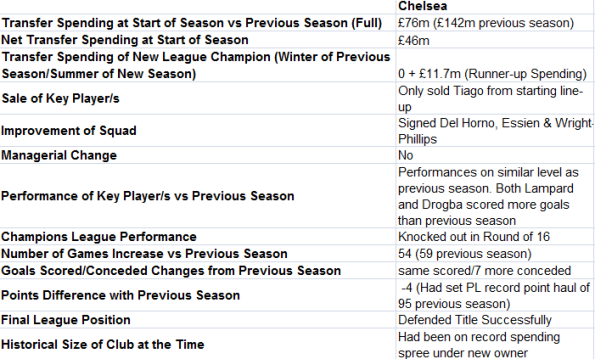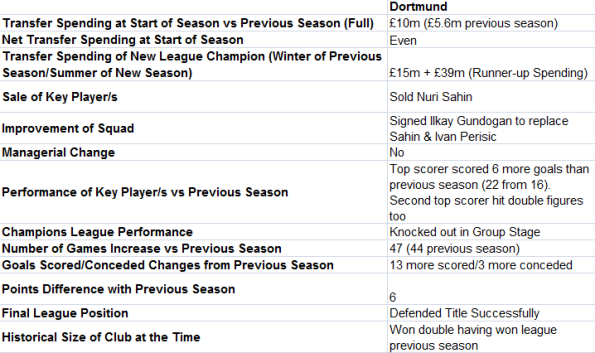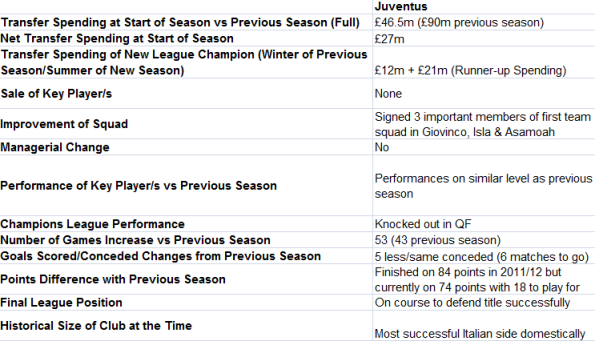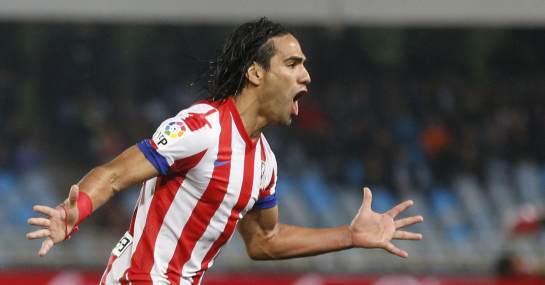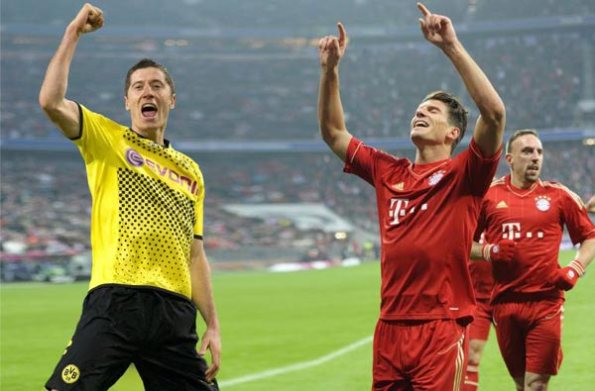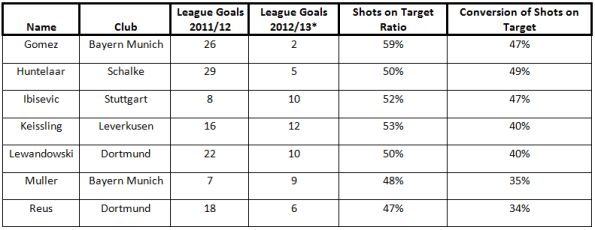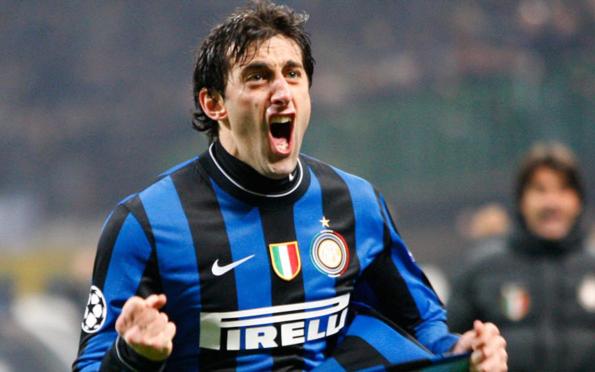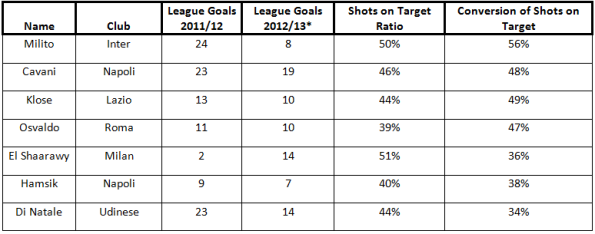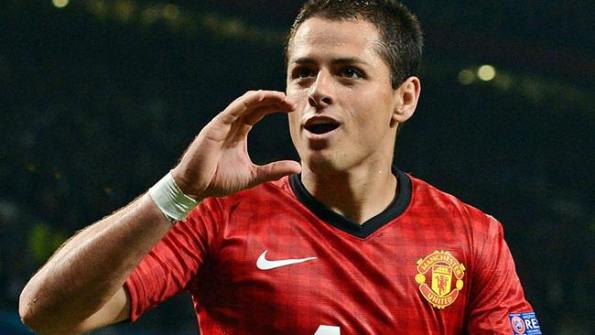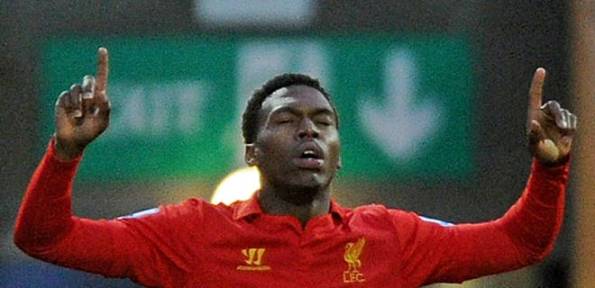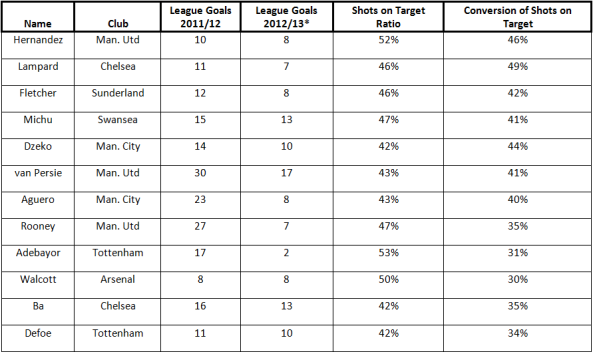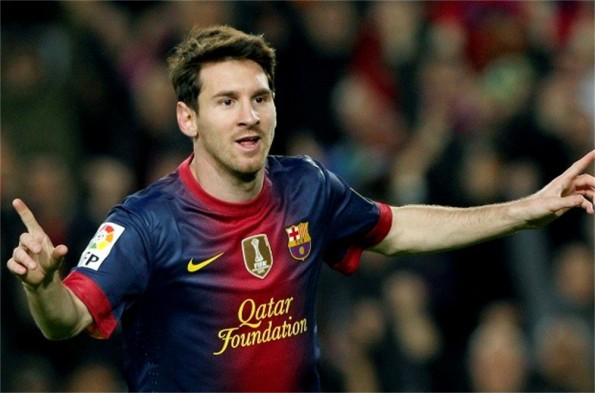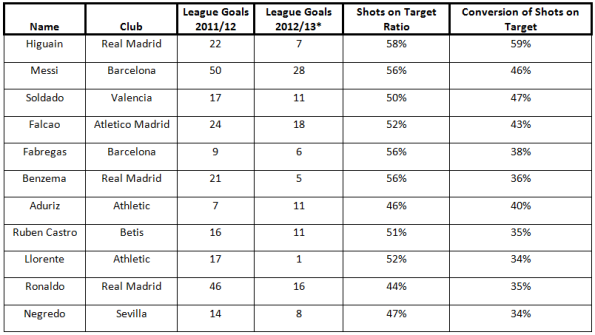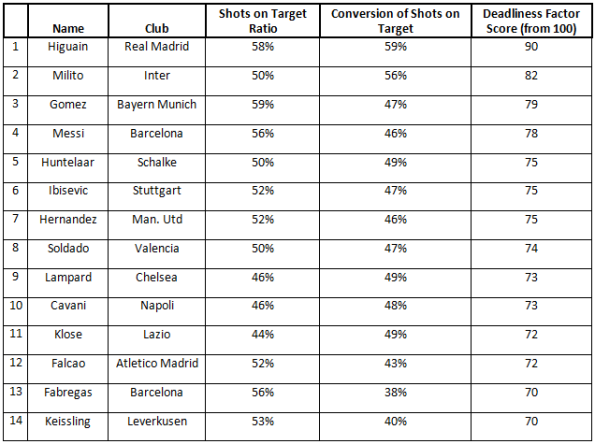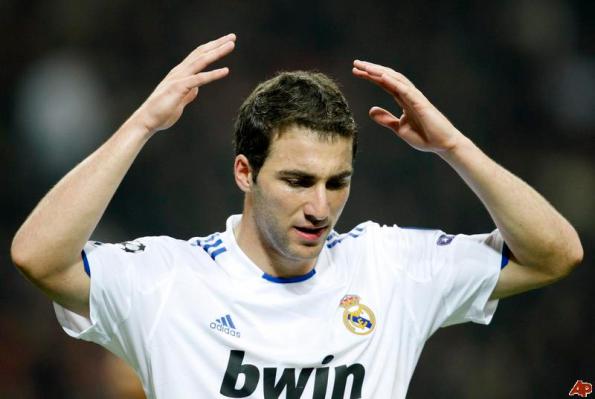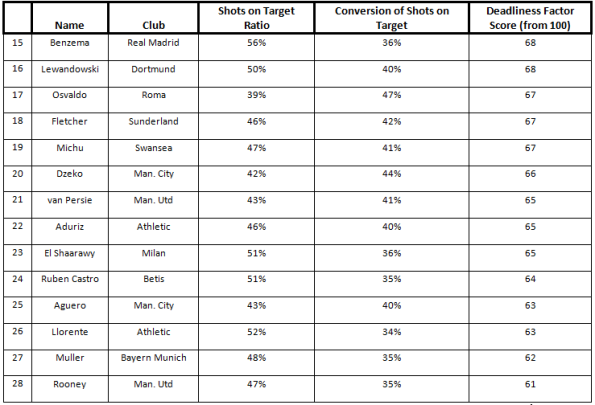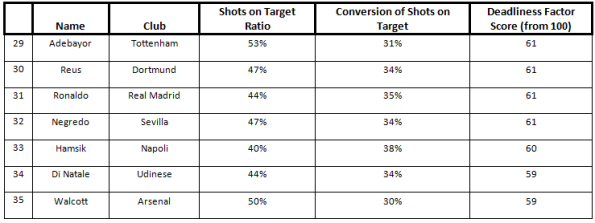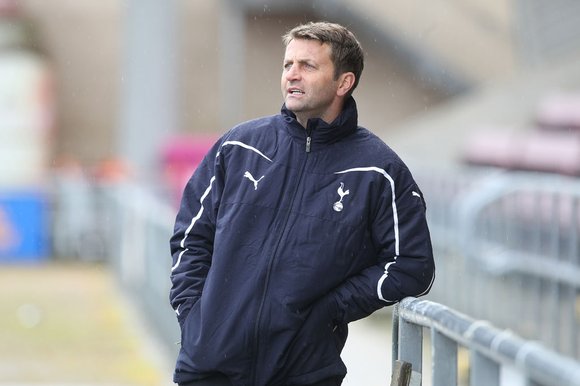Archive
Under 21 UEFA Euro 2015 : 5 Rough Diamonds to Keep an Eye On
The Under-21 European Championships is about to kick off in the Czech Republic. 8 teams will battle it out for the crown. Some familiar names will also be participating and they include established players such as Marc-André ter Stegen, who recently lifted the treble with Barcelona, Harry Kane, John Stones, Bayern Munich’s Pierre Højbjerg, and Portugal’s Bernardo Silva.
Historically, future world class players first made their mark on the European game at this tournament. Luis Figo, Andrea Pirlo, Mesut Ozil and Fabio Cannavaro are among some of the graduates.
Here are our picks for 5 players to keep an eye out for:
Pavel Kadeřábek (Czech Republic)
The hosts will go into the tournament as outsiders to qualify from Group A where they face Germany and dark-horses Denmark, as well as Serbia. If they are to cause an upset then a lot will depend on right-back Pavel Kadeřábek. Already an established full-international, the 23 year old is considered the country’s best full back since the days of Marek Jankulovski and Zdenek Grygera.
He is expected to move this summer, with Hoffenheim touted as a likely destination. The Sparta Prague star man is also adept lining up further ahead on the pitch if required.
Pione Sisto (Denmark)
Pione Sisto Ifolo Emirmija is a name that encompasses everything about modern football. He was born in Uganda to Southern Sudanese parents who immigrated to Denmark with the toddler.
Now 20, he only recently received his Danish citizenship, almost 20 years after moving to the country. The process was “fast-tracked” by the senior national team manager, Morten Olsen.
The dimunitive 5’7 wide attacking midfielder has just played a key role in leading FC Midtjylland to the Danish Superliga title and has interested scouts from a number of major European clubs. He is equally adept on both wings but is predominantly right-footed.
He is pacy, boasts a lot of flair and creativity as well as impressive accuracy when bearing down on goal.
Max Meyer (Germany)
Germany will start the tournament as arguably one of the two favourites to lift the trophy. They are helped by the fact that 6 of their players have already been exposed to a senior debut under Joachim Loew.
One of those players is Schalke’s Max Meyer. His close and pacy dribbling style has been likened to Lionel Messi’s. Meyer puts that down to his schooling in Futsal. Currently an established player in Schalke’s starting line-up he has already played almost 70 matches over the past two seasons, scoring 13 times in the process.
The two-footed attacking midfielder can play anywhere down the middle of the pitch, switching between central midfield and a more advanced role a little further up where he is more of a direct goal threat. Now 19, his reputation has risen so much that he’s already on the radar of a number of “bigger” clubs and it is likely that a transfer will take place sooner rather than later.
Daniele Rugani (Italy)
Daniele Rugani is a name quite familiar to Italian football fans. The strong center-back led Empoli to promotion in 2013/14 and cemented his reputation by helping keep the club up in Serie A this season.
He is strong in the air and is impressively focused during matches, showing the maturity of players much older. He does not dive into tackles and prefers to read the game elegantly in the mould of legendary defender Alessandro Nesta.
It was never likely that he would remain with Empoli for too long, especially as Juventus co-owned him. The Champions League finalists wasted no time in buying out the remaining 50% of his contract from Empoli and have already stated that he would start next season in Turin.
Ruben Neves (Portugal)
Porto’s Ruben Neves has been consistently fast-tracked at all levels of Portuguese football. Already on Fernando Santos’ radar, he is now an established member of Rui Jorge’s U-21 side despite being only 18.
He has been compared to Joao Moutinho already and is likely to be his heir in the national side eventually. He’s already a regular in Porto’s line-up during his debut season, starting 11 matches and making over a dozen appearances off the bench. He has also appeared in the Champions League.
Neves likes to get hold of the ball, and dictate play from a deeper position but is not shy to maraud forward and get into dangerous positions either. Although his goal-scoring output is something that will surely improve as he gets older.
Premier League Miscalculates Value of Europa League
La Liga will have 5 teams participating in the Champions League next season thanks to Sevilla’s success in the Europa League. Premier League clubs, though, continue to, publicly at least, shun their involvement in Europe’s second major club competition. Managers at clubs, as big as Spurs and Liverpool, constantly bemoan their potential participation on Thursday nights. As a result, by this time next year, Serie A could, potentially, regain its 4th Champions League spot, at the expense of the PL, largely due to poor performances by the latter’s clubs in the Europa League. This is facilitated by England losing its highest co-efficient points (2010/11) from the calculation period next season. The question is why is there such a disdain by PL clubs in taking the competition seriously?
Spurs, Liverpool, and Everton are sides who have experienced Champions League action due to their league position on an inconsistent basis over the past decade. The gap between the “Big Four”, which includes Chelsea, Manchester City, Arsenal, Manchester United and other clubs is arguably greater than ever (with the caveat of Manchester United’s out of character last couple of seasons). Three spots are probably etched in stone whilst a 4th CL may be open to a challenge, at some point during the season, before the CL regular pulls away. It is a vicious cycle as the financial benefits gained from the CL allow the respective sides to build and develop a playing squad that is able to “compete” on two fronts – without necessarily challenging for a trophy on either. Clubs who miss regular participation in Europe’s elite competition arguably do not have the squad depth to similarly compete in a balanced way.
Considering that the league is a 38-game slug-fest, it’s difficult to understand why some clubs prefer to prioritize the league route (not even a title challenge) to the CL over a Europa League one especially with the knowledge that victory there would guarantee a CL spot. Winning the Europa League would include a, approximately, 17-match journey for PL clubs, less than half the games of the league season. In reality, a side could gain the CL spot by winning as little as 6 or 7 matches during the campaign. Surely by mid-February, the start of the knock-out rounds, clubs would be in a good position to strategize the rest of their season’s assault rationally. History suggests that they are far likelier to reap the rewards by prioritizing winning the Europa League over a futile 4th spot race, unless they are already comfortably ahead in that race. In the age of projections and statistic models, it would not take much for clubs to have a clear indication of where they should put their focus on and it’s hard to conclude that it would be pointing towards the league.
Instead, PL clubs such as Spurs, this season, find their seasons fizzling out towards the end of March when it’s clear that the CL assault through the league is over, following their exit from the Europa League, had they been in it in the first place. For others, such as Everton, their assault is usually over far earlier in the season.
Next season, Liverpool and West Ham should be joining Spurs and possibly Southampton in the Europa League. For at least 2 if not 3 of those sides the mathematical likelihood of finishing 4th is slim to none. It would be good to hear a more re-conciliatory approach by their managers when it comes to targeting the Europa League. There is no logical reason for there not to be one as long as they have secured their club’s position in the league, away from relegation. There is no reason why these clubs cannot target a more realistic Europa League-placing through the league whilst challenging for a CL spot through the European competition itself. If they don’t, sooner than later, there is a real risk that the PL will surrender the coveted fourth position to Serie A, as quickly as in 12 months time.
Messi – How Great?
In the aftermath of the 2014 World Cup Finals, there have been two topics on everyone’s lips. Needless to say, the first of these is hailing the German triumph over Argentina in what proved to be a tense and close match-up pitting the tournament’s best two sides. That topic has covered most of the front pages of newspapers and online media alike, and rightly so. However, there has been a second topic, and one that has taken a life of its own. This one has focused on undermining Lionel Messi’s World Cup and general standing in the history of the world’s most popular sport.
To add context to the subject, it is fair to suggest that a large number of experts and non-experts alike (social media has given a voice to the voiceless) had always claimed that to be considered the greatest footballer ever, Messi would have to shine at the World Cup. Most of these people fall into the generation that grew up watching another Argentine legend, Diego Maradona, rather than one which grew up idolizing Pele. Legend has it that Maradona single-handedly, excuse the pun, led the Argentine’s to the trophy in 1986 without the help of a decent set of players around him which included Pumpido, Batista, Burruchaga, Valdano and Ruggeri among others.
Whilst Messi has been the single most dominant player in world football during the last 5 or 6 years, his success both individually and as part of a team has almost entirely happened with his club, Barcelona. The question mark would always hover over the debate as long as Messi did not win the World Cup. Needless to say, Pele largely doesn’t figure in this debate because either “he didn’t play in European football” or he wasn’t alone in leading Brazil to those World Cup titles. Selective criteria does wonders to carve out the results that one is looking for.
So the stage was set for Messi to lead Argentina to the World Cup title in Brazil and cement his position as the undisputed greatest. In the early stages, he did not disappoint. A crucial goal against Bosnia in a tense 2-1 victory, a 90th minute winner against a resilient Iran and a brace against Nigeria in his side’s final group stage game gave Messi 4 goals and the key man behind Argentina’s progress at that stage. In the second round, Messi laid off the assist for Angel Di Maria to score against Switzerland in the last minutes before a potential penalty shoot-out. Against Belgium in the Quarter Finals, Messi produced a tactically astute performance which kept the Belgian defence on their heels throughout the match. However, there was no goal or assist. By the end of the semi-final, the criteria for immortality had been shifted by those posing them. Instead of simply winning the World Cup, Messi now had to do something special, something that I, and many others, were under the impression that he had been doing throughout the World Cup, more or less.
There are two explanations for the goal-posts shifting. Firstly, the generational obsession with forwarding one’s own as the greatest of all time poses an insurmountable obstacle. As time passes, legend grows with it too. The emotional connection that is created between idol and object of idolization lasts a lifetime. Secondly, Leo Messi has raised the standards of measurement and analysis to previously unseen levels. Its no longer enough to score a goal, but necessary to put out performances like the famous 4-goal haul in the Champions League against Arsenal regularly. Its no longer sufficient to score 40 goals a season, even though some of the world’s greatest players have never reached that tally, as it would be considered an average or poor season. Those are the criticisms thrown at Messi. Those or simplistic arguments like those put forward, last night during commentary, by BeIN Sports Andy Gray when he stated that he wants to see Messi “move more” and “he doesn’t look happy on the pitch” and “needs to help his defence out”.
Waking up this morning, had you had not watched any of the matches at this summer’s World Cup then you’d be inclined to think that Messi incurred an atrocious World Cup. To add context to the debate, Messi had 4 goals, 3rd in the list after Colombia’s James Rodriguez and Germany’s Thomas Muller. He added 3.3 key passes per game (via WhoScored), only behind Kevin De Bruyne from players who made it past the group stage, equating to 23 clear cut opportunities for teammates, more than any other player, and a World Cup leading 6.6 successful dribbles per game. Despite passing the ball less than Manuel Neuer, a fact widely informed to us today by Castrol Index, he still had more completed passes than either of Arjen Robben or Thomas Muller and averaged more than James Rodriguez or Neymar too. So did Messi have a poor World Cup, like Andy Gray reiterated on numerous occasions during the final? Absolutely not. Was Messi the best player of the tournament? That is probably open to debate, although Robben and Muller definitely had strong cases. James Rodriguez was arguably the type of breakthrough star that the World Cup has had in the past a la Toto Schillachi but his side failed to progress past the Quarter Finals. Neymar may have had a claim if his World Cup had not ended prematurely. Any number of German players could be considered contenders for that pointless award too, but what this World Cup, more than most others in the past, illustrated was the triumph of team over individual. Does it matter who wins the player of the tournament? Does it change anything when all is said and done? Should Messi have been embarrassed, like Gray said he should be, having been selected as the player of the tournament?
All in all, I would like to ask Mr. Gray what criteria he uses to assess players. He’s known to have stated on many occasions in the past that Cristiano Ronaldo is a better player than Leo Messi. To him, I’d like to say that the debate is no longer about Messi or Cristiano, as that train passed a long time ago. It is about Messi or Maradona or Pele. Its unlikely a unanimous or objective conclusion can be reached on this topic. If one factors the importance of the World Cup then Pele is arguably the best player of all time. Winning the World Cup once is one thing but it is not a coincidence that he won it thrice. Maradona’s generation of followers would probably limit the need of winning the World Cup to just one. Messi’s would probably negate it altogether and claim that the Champions League is played at a higher quality each and every season. It may well be. Unfortunately football does not have an easy way of making individuals stand apart from the team. As good as a single player can be, he cannot succeed without the right teammates and manager. This is undebatable. What is certain, though, is that there has never been as much scrutiny, cameras, technology, or analysis involved in football in the history of the game and to stand tall at the end of it all is a feat on its own.
What this summer’s World Cup did more than anything else is to have re-ignited the passion for the international game. The World Cup does matter. It matters a lot. It is the pinnacle of football. Ask any German footballer if they’d trade last night’s trophy in exchange for multiple Champions Leagues and league titles till the end of their career and the answer would be no. But what that means is that the debate over the greatest footballer of all time will probably remain inconclusive – for now. Simply put, there are far too many variables involved that makes it difficult to conclusively provide a single objective answer. Messi is great. Without a doubt. There will be a generation (this one) that will strongly put forward his case to be the greatest of all time when another contender to the tag comes along in 30 years time. By then, its likely that noises emanating from the Maradona camp would have died down just as had been the case with Pele’s. What we can’t argue about is that we are lucky to be witnessing someone of that caliber play right in front of our eyes, week after week, sometimes twice weekly. Its questionable that even Maradona or Pele’s greatest proponents had the privilege to watch and observe their hero play so often in an era with limited television coverage. Just to be having this debate right now is a testament to Messi’s greatness, barely at the age of 27.
Ruben Rochina: Frustratingly Good or Deceivingly Bad?
When Ruben Rochina joined Blackburn Rovers at the end of the winter transfer window in 2011, Rovers were still a Premier League outfit. Lots of hype surrounded the young Spaniard’s move from Barcelona B. Three years down the line and Rochina has just made a second temporary move away from the club, in the form of a loan move to Spanish outfit Rayo Vallecano. If he impresses, the club hold an option to purchase him from Rovers. The move has been met by a split reaction from the Rovers faithful. Some feel Rochina has never had a fair chance and produces more than he’s given credit for, whilst others feel he is not needed by Rovers. This article will look to inspect his performances for Rovers and compare them to some of his colleagues during the period at the club.
Analysis
Having made only 1 start in the half season that followed, its best to begin analyzing Rochina’s performances from the beginning of the 2011/12 season, his first full season at the club. However, we will present statistics that oversee his whole time at the club. Firstly, let’s look at his overall career stats at the club.
What becomes clear is that during the 3 years he has spent at the club, he’s only started 29 matches, during which he scored 11 times and made 3 assists. These are acceptable numbers for a second forward, and in reality better than any other player currently at the club except for Jordan Rhodes. His shooting ratio sees him hit a total of 110 shots, keeping 45 on target. Once again, the conversion rates, whilst not up to par for a top striker (which is not his role in the side nor the argument in question here) are acceptable for a second forward, an attacking midfielder or inside forward, all roles which he has played in for the side.
In order to analyze closer the impact that Rochina had during the games he took part in (and those which he did not) it makes sense to look at how the club fared during the period. With that in mind, the following table has been formulated:
Strikingly, what jumps out first is the fact that Rovers have had a winning record (or at the very least an on par one if one is technical) in each competition that Rochina has started in more than 2 matches. He only started one match during the second half of the season after he joined the club in 2011. Even in the relegation campaign of 2011/12, Rovers had an acceptable 12 points from the 9 games which he started in, losing only three times. Based on that record, Rovers would have had 51 points throughout a 38 match campaign and needless to say would have stayed up that season. In short, Blackburn took twice as many points that season when Ruben Rochina started than when he did not. Coincidence? It is inconclusive to directly correlate Rovers plight with Rochina’s appearances. However, it is one factor that should be kept in mind as one continues to assess the situation.
In 2012/13, during the club’s return to the Championship, Rovers best form “coincided” with Rochina starting games again. The club only lost 3 times when he started and the run included 5 wins. His starts formed more than one third of the club’s total league wins that season. Based on that ratio, the club would have had 75 points by the end of the season, enough for a play-off spot. Critics will again argue that this is coincidental and inconclusive.
Going further, Rochina appeared from the substitutes bench on countless occasions during his 3 years at the club. The table below describes the state of the match the moment Rochina stepped onto the pitch (from the 2011/12 season onwards) and compares the end result at the full time whistle.
Ruben Rochina came off the bench a total of 22 times during this period. The team was in a winning position twice before he was subbed in and continued to hold on for the result. The team was drawing matches 8 times when he was subbed on and turned the result to victory on 4 occasions, drew another 2 and lost the last 2 games. Finally, when subbed in during losing positions, Rochina helped turn 1 of the losses into a draw. However, to be fair, 7 of those losses were in the Premier League.
Adding Perspective
In the 2011/12 relegation campaign of the Premier League, Rochina scored 6 times from 13 starts in all competition (2 goals in the Premier League). Yakubu was top scorer that season with 18 and Junior Hoilett was next on 7 goals. The Spaniards 6 goals came from only 13 shots on target, on the back of a 35% shots on target ratio. On the other hand, Hoilett scored his 7 goals from 23 shots on target, which had emanated on the back of 69 shots in total. There is nothing outstanding about Rochina’s performances that season however nevertheless he had a respectable record which still stood out among his team-mates. That coupled with the fact that Rovers did better when he started matches adds food for thought. Keep in mind that Rochina was 21 for the majority of that campaign.
The 2012/13 campaign is the one which is bitter for proponents of Rochina. He had a stop-start campaign under a number of managers and found himself out of favor yet again towards the end of the season as he was loaned out to Real Zaragoza. However, his performances and numbers probably did not warrant that treatment. Despite featuring for only a part of the campaign, starting only 11 times in the league, he was the club’s joint second top scorer with Colin Kazim-Richards on 5 goals. His 3 assists were also the second highest in the whole squad. He also suffered 48 fouls in the league campaign which was second only to Kazim (50) despite the latter starting almost twice as many games (25). This illustrates that Rochina was a threat to opposition defenders who targeted him by fouling him when they could not stop him fairly. Unfortunately comprehensive passing stats were not compiled for the Championship until the current 2013/14 season so one cannot undertake further intensive analysis and comparison with him teammates. However, his performances in 2012/13 at Championship level do at the very least justify calls by supporters who believed Rochina should have played more games and did not receive the chances he probably deserved over the course of a full campaign in order to silence his critics.
A section of Rochina’s critics argue that he gives the ball away too much. However, in the 2013/14 season, his passing success ratio which stood at 83% is still higher than fan favorite David Dunn who had a 74% success ratio. At the same time, Rochina had a total of 1.6 key passes per game, 3rd highest in the side after Tom Cairney (2.6) and Alan Judge (1.7). David Dunn makes 1.2 key passes per game (WhoScored). Whilst the data is not conclusive due to the number of matches played, it still adds unbiased context to the overall conclusions that have to be drawn.
Conclusions
Ruben Rochina is probably unlikely to play for Blackburn Rovers again. His legacy will pose questions of “what if” from whichever perspective you look at it. His supporters will argue that he offered something different from within the Rovers squad, at the very least at Championship level, and that his performances warranted more opportunities. His critics will admit that although talented, he frustrated them with the lack of end product. The statistics presented today undermine parts of the latter’s argument. It is almost certain that Rochina could have provided more to the club, such is his potential. However, when a young 22 year old foreign player who has been part of the most tumultuous period in the club’s modern history has not been given the opportunity to play more than 5 consecutive matches at any given time, it is difficult to criticize him, when a number of his teammates have been given far more opportunities to cement a place in the side despite far less end product. Looking at his performances and the club’s results during the period, at different levels, critics would surely be harsh to argue that he did not deserve more opportunities in an unsettled Rovers side.
Other criticisms include the fact that he failed to cement a place in the side under most of the managers at the club. The flip side of the argument is which of those managers has been a success? Other than Gary Bowyer, who whilst generally supported by most sections of the fans largely due to a new long-term patient vision that most have taken up after the roller-coaster recent past, all the previous managers were unanimous failures. Even Bowyer has enough critics over a number of aspects of his reign that should at the very least undermine this argument as definitive.
Games are won by goals. Rochina has had a direct impact on wins through his goals and assists during his time at the club. Whilst there was room for improvement, critics would be hard pressed to name a replacement who took Rochina’s spot in the side and contributed to more either directly or indirectly where the club fared better. At the same time, how many times can facts be called “coincidental” within the realms of one argument?
What Next for Blackburn Rovers?
As the hangover in the aftermath of Steve Kean’s departure as manager of Blackburn Rovers subsides, Venkys and their infamous advisers have begun the search for his successor. Without going into too much detail in reviewing the Scots record, it can easily be stated that he holds the worst ever record of any manager in the club’s history. In the words of journalist Richard Jolly, “he was the most loathed manager I’ve ever seen, and arguably the worst one too”.
As fans began to rejoice in a Kean-free era, they have quickly come to the realization that the decision of who replaces Kean lay solely with Venkys and with their track record, at the helm, it does not bode well. Names such as unknown coach Judan Ali, a British coach with an Indian background, have been linked with the job. Some bookmakers have even listed Shebby Singh, Venkys “Global Football Adviser” as a candidate. The current man at the helm, at least in the interim, Eric Black is also among the supposed candidates.
Whilst, rational analysts of the Rovers situation are suggesting that the more time Venkys take in selecting a manager the better for the long-term future of the club, it may be a double-edged sword considering the history of decision-making that the owners have had. As they potentially move down through their short-list for a variety of reasons, what could begin as a well-planned search, could end up being a situation where crazier propositions are considered. A couple such scenarios were detailed above. Nevertheless, it is crucial to highlight the elements that must be considered in selecting the next permanent manager of Rovers.

Former stalwarts Tim Sherwood and Alan Shearer are both rumored to be interested in taking over as manager years after leaving
Firstly, the supporters must be won over. However, insignificant this may sound under normal circumstances, the Blackburn Rovers/Venkys situation is anything but. This, though, does not mean that a crowd-favorite must necessarily be brought back to take over. Both Alan Shearer and Tim Sherwood have been heavily linked and are considered the front-runners for the job. However, fans have reservations about both, especially Shearer. What this does mean, though, is that the reputation of the new manager must not be open to debate. Secondly, management experience is virtually a must. That would appear to rule out Sherwood, although his track-record with Spurs as well as crowd-pulling ability may just about maintain him as a candidate. He does hold a reputation within the game which most ex-players have which may just about balance out their lack of management experience if they have the right coaching team alongside them. Think more Jurgen Klinsmann than Lothar Matthaus when it comes to how a rookie season could turn out for a novice.
Next, crucially, supporters must not link the new man with Steve Kean in any shape or form. Eric Black, whilst a respected coach within the game, was hired under Steve Kean. That, in itself, should be a red light to Venkys irrespective of results over the next game or two in between appointing a manager. Finally, despite the fact that experience is preferable, the new manager must have the motivation, desire and drive to do well for the club and not see it as a way back into the shop window, in case they have been out of the management merry-go-around for a while. The next Blackburn Rovers manager must tick as much out of the requirements laid out above.
Considering Rovers current squad, it is almost certain that with some organization, especially defensively, the individual ability of players should be enough to push the team to finish in the promotion spots at the end of the season. Any man who comes in would be expected to be automatically promoted if not win the league title. Rovers have not performed well this season but have picked up a good amount of points largely due to match-winning goals by players like Nuno Gomes among others, even when they were second best over ninety minutes.
So whilst there are four considerations to make, only one is a virtual “deal breaker”. At this point, we’ll run through some of the names mentioned and apply the logic illustrated above.
Alan Shearer, Tim Sherwood and Garry Flitcroft
Seen as the early front-runner for the job, it is rumored that Rovers approached Spurs over the weekend for Sherwood and may have been knocked back. Shearer and Sherwood have strong reputations within the country, albeit not as managers. They would command the respect of the playing squad instantly and the fans, despite all reservations, would start off completely behind either of the candidates if they are ultimately chosen as managers, even if neither may have been the automatic first choice for supporters. Their lack of management experience counts against them, but Sherwood has been part of a strong Spurs back-room in recent years. Neither may be the ideal candidate and they are definitely not “safe” choices but the factors highlighted previously mean that they are still viable and rational options for Venkys.
Flitcroft, on the other hand, has had his hand at management over recent seasons. He has formed a team with fan favorite Matt Jansen at Chorley. However, they have not set the world alight at the lower leagues yet. Whilst the potential may exist there, it may be a riskier appointment than either of the former two candidates and patience may be a little thinner than with either of the former two.
Mick McCarthy
He has plenty of experience at both Championship and Premier League level. The Irishman definitely knows how to get his sides promoted. The problem lies with keeping them there. Is that an element Rovers should be focusing on right now? Probably not. He is definitely his own man and would have the squad and supporters behind him from the get go. Logically he has to be one of the first people interviewed but the key word used is “logic”.
Judan Ali
As the days pass, more weight is given to the possibility that the unknown quantity has the sort of profile Venkys have been dreaming of. His Indian roots could be a match made in heaven for them, but neither the supporters, nor the players would be convinced of his appointment being anything but a fantasy choice by the owners. It is unlikely that supporters would get behind his appointment and the pressure would be on the young coach from day one. He does not hold the sort of reputation that would off-set his lack of experience at any level.
Eric Black
Purely for the fact that he has been involved as a member of Kean’s backroom staff, Venkys would be advised to give the supporters a clean break and avoid appointing Black. It is time for a fresh page to be taken out and bringing someone from the outside would be highly recommended. Supporters would certainly remain skeptical of his appointment as it would be seen as more of the same from Venkys.
Alan Curbishley
Another “safe” choice like McCarthy. He would tick most of the boxes for Rovers but question marks remain over his motivation to return to management after 3 years out of the game.
Ian Holloway
Whilst he is more charismatic than the other two “safe” choices mentioned above, Holloway has a strong reputation in the game especially at Championship level. Question marks exist over his ability to offer a tactically astute side at the highest level but one thing that cannot be disputed is that he likes his teams to play an attractive style of football. Fans would be happy with his appointment and the players would fall in line too.
Keith Hill
Whilst he was not a legend at the club, his Rovers past is a crucial part of the overall package that Hill offers. He has lower-league experience and worked wonders at Rochdale. Currently at Barnsley, the gloss on a potential future at Rovers has worn off to a degree as he has a losing record at his current club.
Karl Robinson
Joined Rovers during Paul Ince’s time at the club but since has moved on to manage MK Dons where he put one past Kean’s Rovers earlier this season, but who hasnt? He is only 32 years old but has extensive experience in management considering his age. He may be an outsider for the job and supporters would probably be hoping for the best with someone like him but he should be in the same sort of boat as an option for Venkys as Shearer and Sherwood.
Other Candidates
The Lancashire Telegraph has largely been spot-on with its reporting of on-goings at the club in recent months and if their list of candidates is anything to go by then names like Ole Gunnar Solskjaer may also be in the reckoning. He’s currently managing Molde in Norway but has a contract that is winding down in a month. Moving back to the North West of England so close to Manchester United may also appeal to a man who would surely be dreaming of succeeding Sir Alex Ferguson. His reputation is held in high-regard both in England as well as in Europe. However, considering his growing reputation and Manchester United links, would Rovers want to approach a manager who may not want to be at the club after a couple of years if he’s successful?
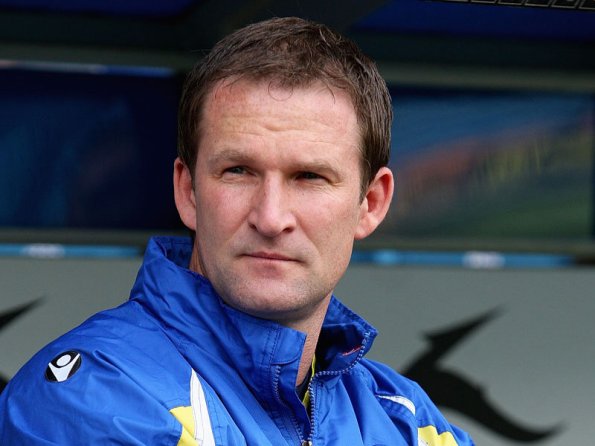
Huddersfield manager Simon Grayson has not been linked with the job but should be on any final short-list that the club is drawing up
Henrik Larsson has also been linked but it is difficult to see that being anything other than speculation. One man who has not been linked to the job yet, but should be, is Simon Grayson. His Blackburn Rovers past means that supporters would get behind him from the out-set. Furthermore, he is probably the most successful ex-Rovers player who has tried his hand at management in the current era. He has currently taken a Jordan Rhodes-less Huddersfield side to near the top of the Championship and with his familiarity with Rhodes’ game it could prove doubly beneficial to approach Grayson. He has had a winning record at all 3 of the clubs he has managed winning almost half of the games he has been in-charge. If he is not on the Rovers short-list, he very well should be. Another name who has not been linked with the club is Brighton’s Gustavo Poyet. He got his club promoted and likes to play attractive football. His reputation in world football is up there due to his playing career and a bright future awaits the Uruguayan.
Conclusions
Whilst there is no candidate that stands out as the exceptional one, there are cases for most of the names that have been linked with the job. However, there are well defined reasons that should rule out some of the candidates from the out-set. If it was up to this writer to suggest a five-man shortlist then the names of Grayson, Sherwood, Solskjaer, Poyet and McCarthy would be on it, giving a fair balance in terms of the main factors that should be considered by the owners when it comes to appointing a permanent manager. It’s times like this when Rovers supporters were hoping the decision was being taken by John Williams, the club’s former Chairman.
If you like the authors work please Follow @BabakGolriz
